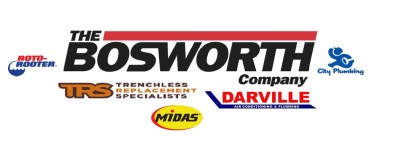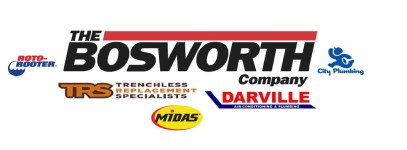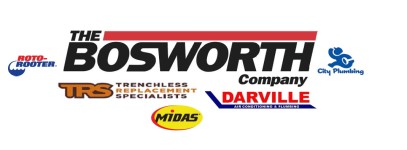Title Page
-
Site conducted
-
Conducted on
-
Prepared by
-
-
Property Owner:
-
Builder:
-
Date/Time:
-
Address:
-
Construction Stage:
- HVAC rough-in (duct)
- HVAC hang unit
- HVAC grill out
- Plumbing rough-in
- Plumbing top out
- Plumbing fixtures
- HVAC Demo
- Plumbing Demo
Administrative Procedures
-
Have you completed your JSA/JHS prior to the start of work?
-
Have you signed in with the construction site representative?
-
Have you obtained appropriate permits prior to starting your work?<br>(Hot work, confined space, permit to work, dig, etc.)
-
Have you been trained and/or certified for the work you will be performing?
-
Have you received your site specific orientation and/or general contractor’s orientation?
-
Routine inspections, monitoring, audits?
-
SDS/GHS on-site and readily available for inspection?
-
Are you conducting or participating in weekly tailgate talks?
-
Administrative procedures media
-
Comments:
General Work Environment
-
Are all work areas clean and dry?
-
Is trash removed daily?
-
Are aisles, walkways, doorways, and exit routes clear and unobstructed?
-
Are toilets and washing facilities provided, kept clean, and safe?
-
Are all measures in place to protect the public from exposure to work activities and equipment?
-
Is material piled, stacked, or racked in a manner to prevent it from tipping, falling, collapsing, rolling, or spreading?
-
General Work Environment Media:
-
Comments:
First Aid and Emergency Equipment
-
Are emergency telephone numbers posted on the job site?
-
Is there at least one person on site trained in CPR?
-
Are first aid kits accessible, inspected, and stocked at least once a month?
-
First Aid and Emergency Equipment media:
-
Comments:
Personal Protective Equipment
-
Eye and Face Protection
-
Is Eye and Face Protection being worn correctly?
-
Are Safety Glasses ANSI Z87.1 approved?
-
Are prescription eye glasses ANSI Z87.1?
-
Is employee wearing Side Shields?
-
Are Face Shields worn?
-
Is Face Shield ANSI Z87.1 approved?
-
Are Hard Hats worn?
-
Are Hard Hats ANSI Z89.1 approved?
-
Was the Hard Hat put into service longer than 5 years ago?
-
Does the Hard Hat need to be replaced due to wear and tear?
-
Are appropriate gloves worn for the task?
-
Type of gloves
- Cotton
- Leather
- Cotton with Neoprene
- Heat resistant
- Impact resistant
- Latex/Nitrite
- Arc Flash
- Kevlar (Cut Resistant)
- Rubber (Chemical Resistant)
-
Are workers wearing Safety-toe Footwear?
-
Is the Steel visible on the safety-toe footwear?
-
Is Body Protection being worn?
-
Type of Body Protection
- Hi-Viz Reflective Vest
- Tyvek Suit
- Flame Resistant (FR) Outerwear
- Arc Flash Gear
-
Is Hearing Protection Required? twa: 90dB
-
Type of Hear Protection
- Ear plugs
- Ear muffs
- Both
-
Is Respiratory Protection required?
-
Type of Respirator
- Dust Mask
- Half-face Respirator (Compliance required)
- Full-face Respirator (Compliance required)
- Loose-fitting Powered-air-purifying Respirator (Compliance required)
- Self-Contained Breathing Apparatus (Compliance required)
- Supplied Air - Working Unit & Air Trailer (Compliance required)
Fire Protection and Prevention
-
Is there at least one “Multi-purpose dry chemical” fire extinguisher (ABC) in place every 3000 sq ft of work area, or every 75 ft of travel distances? (50 ft of travel distance for high fire hazards)
-
Are fire extinguishers clearly visible and unobstructed at all times?
-
Are fire extinguishers inspected monthly for proper tags, pull pin, hoses - not cracked or plugged, fully charged (in the green), and tags up to date?
-
Are fuel gas cylinders and oxygen cylinders secured, separated by 20 ft or have a fire resistant barrier (5ft in height, with a 30 minute burn rating) while in storage?
-
Are employees “competent” in the use of portable fire extinguishing equipment?
-
Fire Protection media:
-
Comments:
Fall Protection
-
Are holes and other openings guarded by a grate, cover, guardrail, or equivalent on all sides (except at entrances to stairways or ladders)?
-
Are there stair rails or handrails on all stairways having 4 or more steps?
-
Are railings provided on ramps?
-
Do all elevated surfaces include: guardrails at least 42 inches high, mid-rails at 21 inches high, and toe boards 4 inches high?
-
Can all handrail systems support 200 pounds of an outward pushing force?
-
Are all elevated surfaces equipped with a safe means of access?
-
Are Fall Protection harnesses and lanyards used by every employee working 6 ft (or best practice) or higher above the ground or lower working surface, or on steeply pitches roofs, 6/12 or greater?
-
Are Fall Protection harnesses and lanyards a minimum of 1/2 inch nylon or equivalent, and short enough to prevent employees from falling more than 6 feet?
-
Are lifelines (lanyards) secure above the point of operation to an anchor point that will withstand 5000 pounds of force from each attached worker?
-
Are harnesses, lanyards, and other fall Protection equipment inspected prior to use?
-
Where a job site has protruding steel rebar below the work level, is the steel rebar protected by covers to prevent impaled injuries?
-
Fall Protection media:
-
Comments:
Portable Ladders
-
Are ladders being used for their designed purpose only? (step ladders/extension ladders)
-
Are ladders being used beyond their maximum intended load?
-
Are all ladders maintained in good condition and inspected before each use? Are broken and defective ladders taken out of service IMMEDIATELY?
-
Are ladder rungs/steps slip-resistant and free of dirt, grease, oil, ice, snow, etc.?
-
Are employees facing the ladder when climbing up and down the ladder?
-
Are employees standing below the top 2 steps when using step ladders?
-
When ladders are used to gain access to elevated platforms, does the ladder ALWAYS extend at least 3 feet above the elevated surface, and secured properly?
-
Are ladders placed on dry, stable footing, and properly secured?
-
Portable Ladder media:
-
Comments:
Materials - Handling, Storage, and Disposal
-
Are compressed gas cylinders (propane, acetylene, etc.) secured and stored properly, and blocked from traffic and vehicle hazards?
-
Are cylinders stored in the upright position with the protective cap installed and secured with a chain or other equivalent securing methods?
-
Are concrete batch/plants/mixing facilities properly inspected for electrical and other potential hazards or damage?
-
Materials - Handling, Storage, and Disposal media:
-
Comments:
Scaffolding
-
Scaffolding
-
Are scaffolds set up on level, stable ground with dry footing?
-
Has the scaffold been assembled and inspected by a “competent” person?
-
Was the scaffold inspected prior to use and documentation properly filled out?
-
Do all scaffolds higher than 4 feet have 42-inch-high guardrails and mid rails halfway between the to and platform with a toe board?
-
Are the planks used in the scaffold regulation?
-
Are scaffolds in good condition with no damage or missing parts?
-
Do all planks on scaffolds fit tightly with no open spaces between the boards?
-
Where planks are overlapped are they lapped over the supports?
-
Do all scaffold planks extend 6-8” beyond the end of the scaffold frame?
-
Are all ladders or stairs used to access scaffolds either tied or welded to the scaffolds for safe access? Are ladders positioned to provide direct access?
-
Are materials being stockpiled on scaffold? Are all materials removed from scaffold at the end of the day?
-
Are open sides of scaffold less than 14 inches from the face of the work?
-
Are platforms of 10 feet or less extended over their end supports no more than 12 inches?
-
Are guardrails in place at the open ends of the scaffold?
-
Has the movement of occupied scaffold been prohibited (unless designed by a registered professional engineer)?
-
Have toe boards been installed to prevent falling objects?
-
Is “X” bracing installed on the ends of the scaffold on every third set of post horizontally and every forth runner vertical?
-
Are all pins installed where required and locked?
-
Are castors pinned into the frames or adjustment screws?
-
Scaffold media:
-
Comments:
Electrical
-
Are all cord-connected, electrically-operated tools and equipment double insulated or effectively grounded?
-
Are ground-fault circuit interrupters provided on all temporary electrical circuits?
-
Are all electrical rooms/panels secured and have proper signage?
-
Do all extension cords have 3-prong plugs and all 3 prongs intact?
-
Are all electrical cords inspected and in good working condition (i.e. no splices, frays, or the ground prong removed)?
-
Are extension cords a No. 12 or larger gauge and properly marked?
-
Where electrical cords must cross roads, driveways, or walkways, are they protected by solid, weather-resistant bridges to prevent damage to the cords?
-
Are multiple plug adapters (octopus plugs) prohibited?
-
Are electrical circuits and equipment shut off, de-energized, and locked out before equipment installation, repairs, maintenance, or servicing?
-
Are unused switches, receptacles, and junction boxes covered with tight-fitting covers or plates?
-
Electrical media:
-
Comments:
Trenching and Shoring
-
Trenching and Shoring
-
Are spoils, materials, and equipment set back a minimum of 2 feet from the edge of the excavation?
-
Are barriers in place around excavation areas?
-
Is a means of egress available in all trenches that are 4 feet deep or more?
-
Are means of egress within 25 lateral feet of workers?
-
Is high visible PPE worn by all employees working in and around trenches?
-
Are employees protected from loose rock or soil?
-
If needed, are trench boxes/shoring used?
-
For the soil type, is the excavation sloped properly?
-
Has a “competent” person inspected the excavation before entry?
-
Excavation and Shoring media
-
Comments:
Scissor lifts, Manlifts, and Aerial lifts.
-
Scissor lift, man lift and aerial lift
-
Are only trained and authorized personnel operating the lift?
-
Are the lifts being inspected prior to use?
-
Is the operator’s manual available for operation, inspection, and training needs?
-
Is Fall Protection being utilized during the operation of the lift?<br>(i.e. handrail system, full body harness, etc.)
-
Are the manufacturer’s capacity limits being followed?
-
Are weather precautions, such as high wind, being observed?
-
Are overhead hazards, such as power lines, being observed?
-
Are outriggers and stabilizers being used when needed?
Power-Actuated Tools/Hand and Power Tools
-
Are tools maintained in a safe condition?
-
Are power-actuated tools inspected for obstructions or defects before use?
-
Are damaged and defected tools removed from service and repaired as soon as true damage or defect is found?
-
Are grinders, saws, and other tools with moving parts, equipped with appropriate safety guards to prevent physical contact with moving parts?
-
Power-Actuated Tools/Hand and Power Tools media:
-
Comments:
Traffic Control
-
Are proper signs placed on roads to alert drivers of construction danger ahead?
-
Are cones used in the street at least 28 inches high?
-
Do Flagger stations provide 2 safe means of egress in the event of an emergency?
-
Have flaggers been properly trained and carry their flagging certification card?<br>
-
Traffic Control media
-
Comments:
-
Superintendent/Representative:
-
Bosworth Representative:










